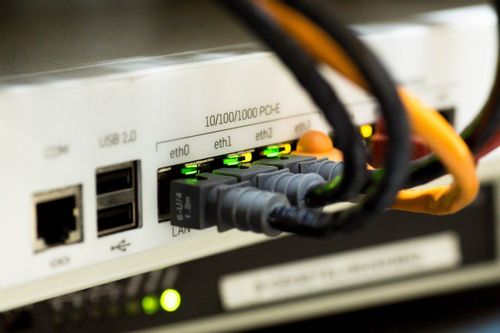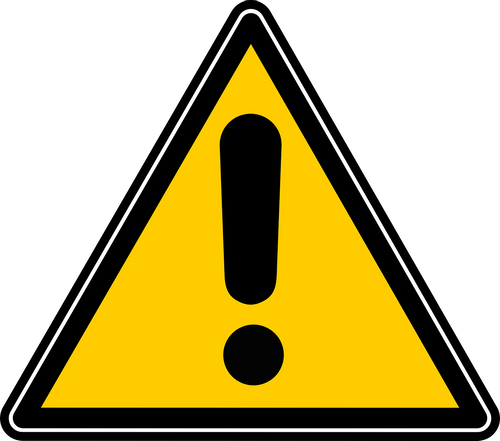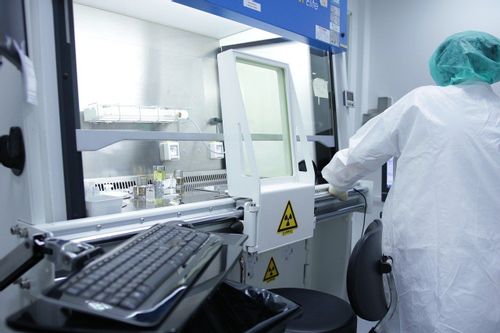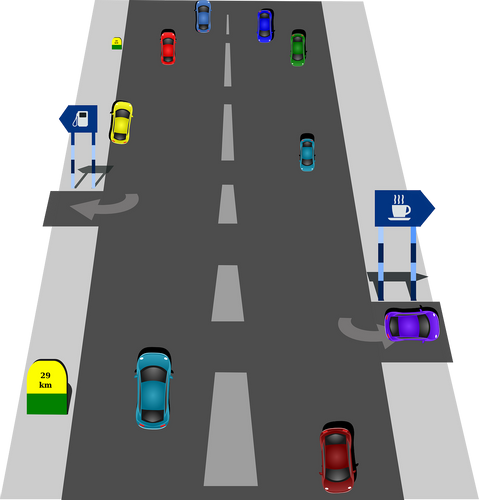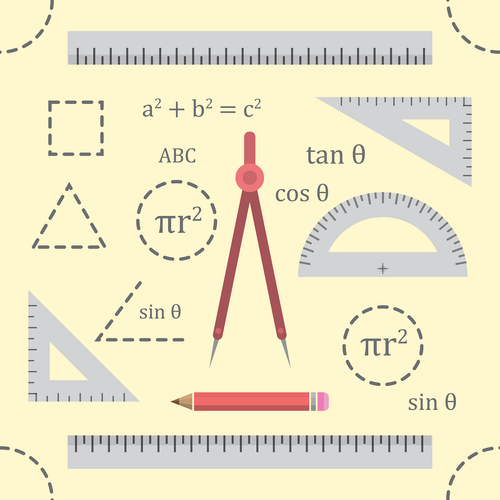Standards Packages
iTeh together with SIST has developed and compiled a comprehensive collection of standard packages to support your standard requirements. Our packages cover an array of content that includes quality management, risk management, road vehicles, machine safety, and much more. With over 200 packages to choose from, you are sure to find a collection to suit your standard needs.
Latest Standards
This document specifies certain characteristics of the essential oil of lavandin super [Lavandula x intermedia Emeric ex Loisel. ‘super’ (Ex Lavandula angustifolia Mill. x Lavandula latifolia Medik. ‘super’)], with a view to facilitating the assessment of its quality.
- Standard7 pagesEnglish languagesale 15% off
- Standard7 pagesFrench languagesale 15% off
This document specifies the minimum design and performance requirements for clothing as part of personal protective equipment (PPE) to be used by firefighters, primarily but not solely to protect against exposure to flame and high thermal loads, and particulates (including other products of combustion). To assist with choice based on user risk assessment, a single level of heat and flame protection is included with a number of options that can provide additional protection. For more information on firefighter risk assessment consult ISO/TR 21808. The scope of this document does not include clothing for use in high-risk fire exposures where for example, reflective protective clothing according to ISO 15538 could be more appropriate, or for use in long-term firefighting operations in high ambient temperature, for example bush, wildland, or forest firefighting where clothing according to ISO 15384 (ISO 16073-3) could be more appropriate. Similarly, this document does not include clothing to protect against chemical and biological hazards, other than against short-term and accidental exposure while engaged in firefighting and associated activities when fighting fires occurring in structures. This document describes types, design, and performance of clothing, the specific requirements for clothing, marking, and manufacturer’s instructions.
- Standard23 pagesEnglish languagesale 15% off
This document specifies safety and quality requirements for detection and avoidance (DAA) systems used between uncrewed aircraft systems (UAS) and other objects including aircraft. This document includes the requirements for radars and optical sensors used for DAA and is derived to meet the requirements for UAS operations involving DAA set out in ISO 21384-3.
- Standard16 pagesEnglish languagesale 15% off
This document specifies requirements and test methods for electromagnetic emissions and for electromagnetic immunity of electrically powered wheelchairs and scooters, intended for indoor or outdoor use, or both, by people with disabilities. It is also applicable to manual wheelchairs with an add-on power kit. It is not applicable to vehicles designed to carry more than one person. This document also specifies requirements and test methods for the electromagnetic compatibility of battery chargers intended for use with electrically powered wheelchairs and scooters. A reference configuration is specified for adjustable wheelchairs and scooters in order to enable test results to be used for comparison of performance.
- Standard22 pagesEnglish languagesale 15% off
This document specifies the minimum design and performance requirements for a fire hood as part of personal protective equipment (PPE) to be used by firefighters, primarily but not solely to protect against exposure to flame, high thermal loads and particulate protection.
- Standard15 pagesEnglish languagesale 15% off
This document specifies graphical symbols for diagrams related to industrial components, products and processing. This document constitutes a symbol library, from which users can use the symbols or created symbol examples for use in diagrams (see Tables 1 to 149). General rules and guidance for the preparation and presentation of graphical symbols are given in ISO 14617-1. Application rules for the symbols are shown in normative Annex A. This document does not apply to: — graphical symbols for fluid power objects, see ISO 1219-1 (the collective application standard of the ISO 14617 series); — symbols of measurement and control functions such as mathematical functions and process functions; — graphical symbols for electrotechnical objects, see the IEC 60617 database. Symbols deleted from the previous edition of the ISO 14617 series are summarized in informative Annex B as a reference. The alphabetic index of symbols defined in this document is shown in informative Annex C.
- Standard237 pagesEnglish languagesale 15% off
This document addresses the provision of tyre pressure monitoring (TPM) services. It specifies the form and content of the transmission data required to support TPM systems (TPMS) and the access methods for these data. This document provides specifications for common communications and data exchange aspects of the TPM application service that a jurisdiction regulator or operator can elect to require or support as an option, including: a) a high-level definition of the service that a service provider has to provide [the service definition describes common service elements (SEs), but does not specify the detail of how such an application service is instantiated, nor the acceptable value ranges of the data concepts defined]; b) the means to realize the service; c) application data naming, content and quality that an in-vehicle system (IVS) has to deliver, including a number of TPM profiles or data (noting that requirements and constraints of what can/cannot be transmitted over the air can vary between jurisdictions); d) support for a number of defined communication profiles to enable remote inspection. This document provides specifications for the following application profiles: — Application profile A1: the cyclical initiation of TPM message by on-board equipment (TPM-C). — Application profile A2: the exceptional initiation of TPM message by on-board equipment (TPM-E). — Application profile A3: the provision of TPM data as the result of an off-board request (TPM-R). — Application profile A4: The provision of TPM data as the result of an off-board reading of tyre pressures of vehicles which can potentially be unequipped (TPM-O).
- Standard74 pagesEnglish languagesale 15% off
This document defines a data format to exchange data that is relevant for exchanging and using measurement equipment between calibration service providers, laboratories and requestors in vehicle safety testing. Additional content found on https://standards.iso.org/iso/ts/23520/ed-1/en defines standard exchange for equipment grouping and metadata definitions for test documentation. Related electronic documents are available for detailed reference based on examples. This document is applicable for all equipment manufacturers, calibration service providers, laboratories and their customers. This document excludes the exchange of test results or test documentation itself which is extensively defined in ISO/TS 13499.
- Technical specification7 pagesEnglish languagesale 15% off
This document specifies the general requirements and tests for decomposition blockers downstream of pressure regulators in acetylene manifold systems (see ISO 14114). Decomposition blockers can be used in the low-pressure section (downstream of acetylene manifold system outlet) up to 0,15 MPa (1,5 bar) e.g. in pipelines, outlet points or for the protection of low-pressure sections in big pipe systems. Decomposition blockers can only be used in sections with pure acetylene. The possible backflow of oxygen or air into the section where the decomposition blocker is installed needs to be prevented by a non-return valve downstream of the decomposition blocker.
- Standard6 pagesEnglish languagesale 15% off
This document specifies the framework, concepts, methodology for testing, and criteria to be achieved to claim conformance to multiple parts of the ISO/IEC 21122 series. It lists the conformance testing procedures.
- Standard24 pagesEnglish languagesale 15% off
IEC 63522-39:2025 is used for testing all kind of relays and shall evaluate their ability to perform under expected conditions of transportation, storage and all aspects of operational use. This document defines standard test methods for: 1. measuring the insertion and withdrawal forces of the mating relay and socket; 2. measuring the insertion and withdrawal forces on relays with flat quickconnect terminations; 3. verifying the correct connection of flat terminals with eye lug connectors.
- Draft10 pagesEnglish languagesale 10% offe-Library read for1 day
IEC 63522-6:2025 is used for testing all kinds of relays and evaluates their ability to perform under expected conditions of transportation, storage, and all aspects of operational use. This document defines a standard test method to measure contact-circuit resistance or voltage drop.
- Draft13 pagesEnglish languagesale 10% offe-Library read for1 day
This standard covers the requirements for phase-shifting transformers of all types. The scope excludes transformers with an unregulated phase shift. This document is limited to matters particular to phase-shifting transformers and does not include matters relating to general requirements for power transformers covered in existing standards in the EN 60076 series.
- Draft7 pagesEnglish languagesale 10% offe-Library read for1 day
IEC 62541-15:2025 describes a safety communication layer (services and a protocol) for the exchange of SafetyData using IEC 62541 mechanisms. It identifies the principles for functional safety communications defined in IEC 61784‑3 that are relevant for this safety communication layer. This safety communication layer is intended for implementation in safety devices only. NOTE 1 This document targets controller-to-controller communication. However, easy expandability to other use-cases (e.g. OPC UA field level communication) has already been considered in the design of this document. NOTE 2 This document does not cover electrical safety and intrinsic safety aspects. Electrical safety relates to hazards such as electrical shock. Intrinsic safety relates to hazards associated with potentially explosive atmospheres. This document defines mechanisms for the transmission of safety-relevant messages among participants within a network using OPC UA technology in accordance with the requirements of the IEC 61508 series and IEC 61784-3 for functional safety. These mechanisms can be used in various industrial applications such as process control, manufacturing, automation, and machinery. This document provides guidelines for both developers and assessors of compliant devices and systems. NOTE 3 The resulting SIL claim of a system depends on the implementation of this document within the system – implementation of this document in a standard device is not sufficient to qualify it as a safety device.
- Draft93 pagesEnglish languagesale 10% offe-Library read for1 day
IEC 63522-35:2025 is used for testing all kind of relays within the scope of technical committee 94 and evaluates their ability to perform under expected conditions of transportation, storage and all aspects of operational use. This document defines a standard test method for resistance to cleaning solvents.
- Draft9 pagesEnglish languagesale 10% offe-Library read for1 day
IEC 62933-4-2:2025 defines the requirements for evaluating and reporting the negative impact on the environment caused by the failure of a cell, flow cell, battery or flow battery in the accumulation subsystem of a battery energy storage system (BESS). The batteries within this scope used in a BESS are classified according to the type of their electrolyte. These electrolyte types are aqueous, non-aqueous or solid. The environmental impacts directly caused by the failure of other components of the BESS are not within the scope of this document.
- Draft27 pagesEnglish languagesale 10% offe-Library read for1 day
IEC 62902:2025 specifies methods for the clear identification of secondary cells, batteries, battery modules and monoblocs according to their chemistry (electrochemical storage technology). The markings described in this document are applicable to - secondary cells, - batteries, - battery modules, and - monoblocs, when they are placed on the market for end use and when their battery volume exceeds 900 cm3. The chemistry marking is useful for the installation, operation and decommissioning phases in the battery's life cycle. This document defines the conditions of use of the markings indicating the chemistry of these secondary batteries.
- Draft24 pagesEnglish languagesale 10% offe-Library read for1 day
IEC 62037-1:2025 deals with the general requirements and measuring methods for intermodulation (IM) level measurement of passive RF and microwave components, which can be caused by the presence of two or more transmitting signals. The test procedures given in this document give the general requirements and measurement methods required to characterize the level of unwanted IM signals using two transmitting signals. The IEC 62037 series addresses the measurement of PIM but does not cover the long-term reliability of a product with reference to its performance. This third edition cancels and replaces the second edition published in 2021. This edition constitutes a technical revision. This edition includes the following significant technical changes with respect to the previous edition: a) added clarification that PIM generation is typically frequency dependent and noted that testing with swept or multiple fixed frequencies often provides more accurate results; b) identified multi-port PIM analyzers as a possible test set-up topography; c) added specification that test power level does not exceed the power handling capability of the DUT; d) updated test specification to include missing parameters needed to properly define a PIM test; e) added clarification that PIM test reports include the maximum PIM value measured over the test duration; f) corrected error in Figure 3 that was erroneously changed in IEC 62037-1:2021.
- Draft19 pagesEnglish languagesale 10% offe-Library read for1 day
IEC 60255-27:2023 specifies the product safety requirements for measuring relays and protection equipment having a rated AC voltage up to 1 000 V, or a rated DC voltage up to 1 500 V. This document specifies essential safety requirements to minimize the risk of fire and hazards caused by electric shock or injury to the user and property. This document specifies only product safety requirements; functional performance of the equipment is not covered. This document covers all the ways in which the equipment can be mounted and used in cabinets, racks and panels. This document also applies to auxiliary devices such as shunts, series resistors, transformers, auxiliary control panels, display devices, etc., that are used in conjunction with measuring relays and protection equipment and are tested together.
- Draft103 pagesEnglish languagesale 10% offe-Library read for1 day
IEC 61109:2025 applies to composite insulators for overhead lines consisting of a load-bearing cylindrical insulating solid core consisting of fibres - usually glass - in a resin-based matrix, a housing (surrounding the insulating core) made of polymeric material and metal end fittings permanently attached to the insulating core. Composite insulators covered by this document are intended for use as suspension/tension line insulators, but these insulators could occasionally be subjected to compression or bending, for example when used as interphase-spacers. Guidance on such loads is outlined in Annex C. The object of this document is to: - define the terms used, - specify test methods, - specify acceptance criteria. This third edition cancels and replaces the second edition published in 2008. This edition constitutes a technical revision. This edition includes the following significant technical changes with respect to the previous edition: - extension of this document to apply both to AC and DC systems; - modifications of Clause 3, Terms, definitions and abbreviations; - removal of Clause 7, Hybrid insulators, from this document; - modifications of tests procedures recently included in IEC 62217 (hydrophobicity transfer test, stress corrosion, water diffusion test on the core with housing); - modifications on environmental conditions; - modifications on classification of tests and include the relevance of the interfaces; - clarification and modification of the parameters determining the need to repeat design and type tests; - revision of Table 1; - revision of electrical type tests; - revision of re-testing procedure of sample test; - addition of a new Annex D on electric field control for AC; - addition of a new Annex E on typical sketch for composite insulators assembly; - addition of a new Annex F on mechanical evaluation of the adhesion between core and housing; - addition of a new Annex G on applicability of design- and type tests for DC applications.
- Draft49 pagesEnglish languagesale 10% offe-Library read for1 day
Benefits

Full Standards Solution
Our catalog includes not only latest standards but also full meta information about related standardization project lifecycle.

Cost Effective
Our PRICE MATCH GUARANTEE policy with multi-level volume discounts gives our clients the best option in the market. In addition, you can get access to the standards for 3, 10, or 30 days.

Stay Notified
Get alerted to the latest revisions and new standards in the Weekly Newsletter. Standards are constantly changing. Don’t miss a revision that can impact your business.
About Us
iTeh Inc is a software development and IT consulting team of professionals who provide consulting, development and implementation of solutions for all types of businesses.
In cooperation, with the Slovenian Institute of Standardization (SIST), we create a unique solution that covers all aspects of the lifecycle of Standardization organizations. iTeh Standards is a part of the solution that helps SIST to provide and sell their products to Customers.
iTeh Standards Store is an evolving project, our goal is to build long-term relationships with our customers. We believe in delivering quality services to solve our customers' challenges and define success by exceeding our customers' expectations. We are always ready to listen and our experience allows us to provide our customers with helpful effective suggestions. You can contact us by email.
We are committed to providing the best possible experience for our customers.
Compliance with international standards is increasingly becoming one of the key competitive advantages in the global market. Our company creates all conditions for the most comfortable implementation of new documents and norms in the processes carried out by your organization. Some of the key advantages of working with us are:
- Cost-effective - multi-level discounts and permanent updates of the functions give our clients the best option on the market.
- e-Library - access to standards for a period of time of your choice. It is a cost-effective solution for keeping updated with the newest standards.
- Company-wide documents - create a company account and connect all employees with access to purchased standards, e-Library documents, and packages.
- All in one spot - all purchased standards are kept in one place with controlled access by the account administrator.
- Client-centric - providing quality consulting is the prerogative and incentive to create new products that accompany your success and scale.
- 24 / 7 client support
We are dedicated to building mutually beneficial and long-term relationships with our clients. That is why our team focuses on creating services to help our customers develop and achieve new productive results.








